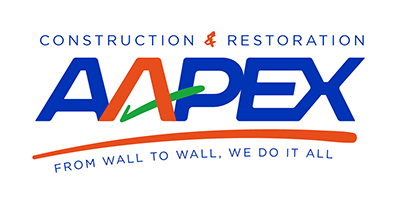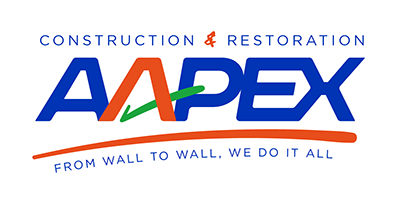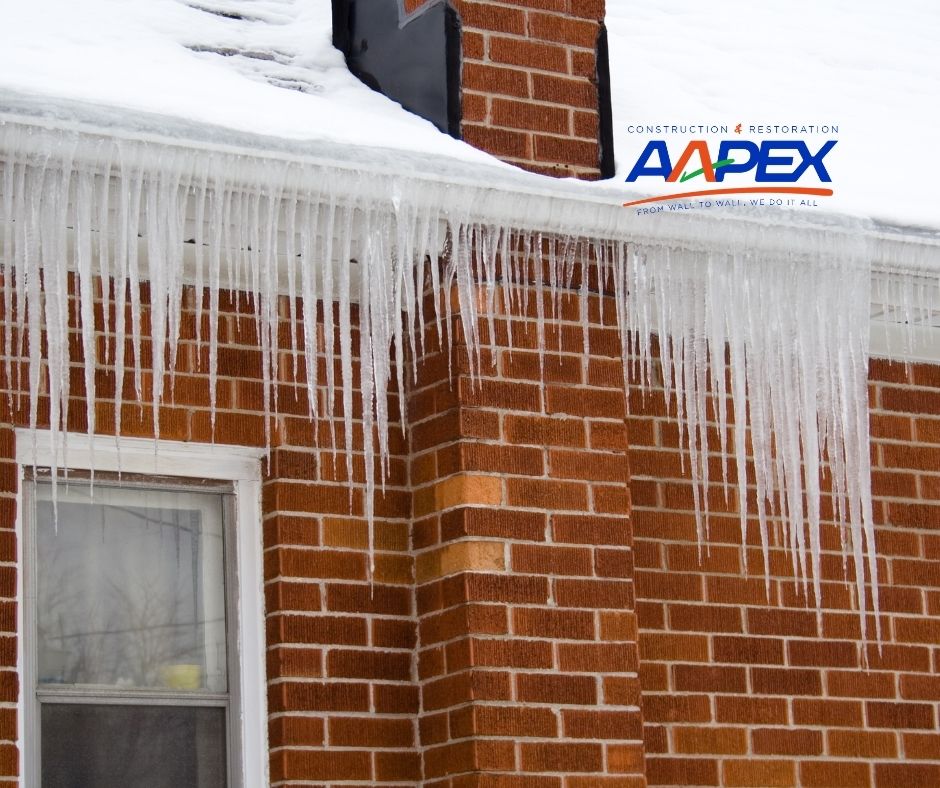A long line of glistening icicles hanging off the edge of your roof may look beautiful, but the truth is they may be doing significant damage to your home. And that’s aside from the potential danger they pose from suddenly detaching and hitting what—or who—happens to be below. In this article, we’ll discuss how icicles and ice dams may be damaging your home as well as methods for their safe removal.
The Problem with Icicles
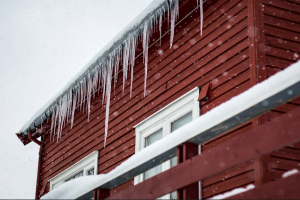
Icicles typically form for a combination of reasons. The most common being issues related to roof insulation or ventilation. Heat escapes through the roof, melting the snow that trickles down and refreezes once it hits roof’s overhang. The result is the formation of ice dams that grow over the gutters and finally extend over the edge in a long, thick line of icicles. Icicles also form if your gutters are clogged, preventing melted ice and snow from draining. Water in gutters will freeze rather quickly, if not allowed to drain, building up and growing into a line of icicles. While icicles and ice dams are a sign of underlying issues with your roof’s ventilation, they can also cause surprising damage to your home.
Ice Dams
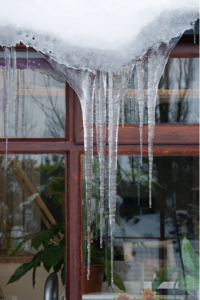
Ice dams and icicles are incredibly heavy. Your gutters and your roof are not designed to withstand that amount of weight pulling on them for any length of time. In addition to that, water pools behind them, where it sinks through the roof and into your home. Water intrusion caused by ice dams often goes undetected for a long time because it runs down the inside of the walls, rather than dripping through the ceiling. This undetected water intrusion can cause significant damage to the shingles, roof decking, and walls, while also creating the ideal environment for mold to grow inside your home.
Strain on Your Foundation
Clogged gutters during heavy summer storms can allow water to pool around your foundation, leading to potential cracks in your foundation walls, or worse. The same holds true in the winter, when icicles drip into puddles that form along the foundation of your home. The ground around the foundation becomes saturated with water that expands and contracts with each freeze/thaw cycle. This same process is what causes Northeast Ohio’s infamous springtime potholes. Just imagine the damage that may be happening to your foundation.
Potential Dangers of Removing Icicles
Icicles are far heavier than most people realize, a line of them easily weighing hundreds of pounds, if not more. When a cubic foot of ice weighs 57.2 pounds, the weight of an icicle of any significant size may be enough to knock a person off balance, causing them to fall. And knocking them off the roof will send heavy, sharp projectiles flying, with the potential to damage objects or severely injure people below. In addition to the risk of injury, you can also damage your shingles, roof, and gutters by improperly removing icicles and ice dams from your roof.
Safely Removing Icicles & Ice Dams
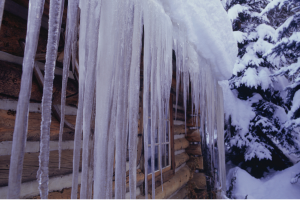
So, icicles and ice dams may be doing significant damage to your home, but removing them risks injury to yourself or your home. So, what are you to do? Here are some tips on safely removing icicles and ice dams from your home.
Removing Ice Dams
Ice dams are long thick sheets of ice that stretch along the length of your roof. Once they become noticeable, they are generally massive. The bigger they are, the more potential damage they cause to your roof if improperly removed. For this reason, we don’t recommend homeowners attempt to dislodge ice dams from their roof, but instead create channels that will allow the melted snow to drain. To do this, fill a sock with rock salt and place it on the ice dam, perpendicular to the gutter line. Repeat every few feet to create a system of channels that will give the melted snow an escape route off your roof.
Removing Icicles
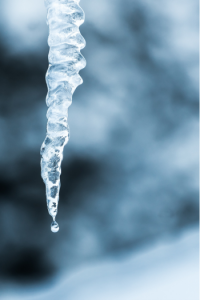 Small icicles, those less than a foot long and an inch wide, can easily be removed with a telescoping snow rake. Be careful to hit only the icicles and to protect yourself and others from falling debris. Wear safety googles, gloves, and be mindful of where the ice is falling. Remember, an icicle is the perfect murder weapon for a reason.
Small icicles, those less than a foot long and an inch wide, can easily be removed with a telescoping snow rake. Be careful to hit only the icicles and to protect yourself and others from falling debris. Wear safety googles, gloves, and be mindful of where the ice is falling. Remember, an icicle is the perfect murder weapon for a reason.
Larger icicles, those longer than a foot and thicker than an inch, should be removed by a roofing specialist who will be able to remove the ice without causing damage to your home. An added benefit of calling in the pros is they will be able to assess the underlying cause of the ice dams and icicles and provide a solution that will solve the problem once and for all.
Dangerous Icicles & Ice Dams? Aapex Construction & Restoration is Here for You!
With more than 20 years of experience in the industry, Aapex Construction & Restoration has the experience and expertise to protect you and your home from the dangers of ice dams and icicles. Our extensive roofing knowledge gives us the tools we need to remove them and assess the underlying issues causing ice to build up on your home. We are licensed, bonded, and insured and make it our mission to exceed your expectations for quality and attention to detail. Contact us for a consultation today!
Related Articles
The Causes of Roof Ice Dams and How to Prevent Them
The Importance of Gutter Cleaning
The Importance of Proper Roof Ventilation
